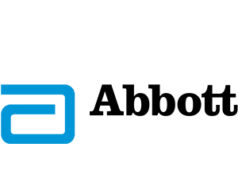UK charity Heart Valve Voice has launched a report—Towards a Heart Healthy Future: a 2020 Vision for Heart Valve Disease’—that sets out recommendations to prioritise the development of National Institute for Health and Care Excellence (NICE) guidelines to ensure that people living with heart valve disease receive a timely diagnosis and have equal opportunity to access effective and appropriate treatment for the condition, regardless of where they live.
With the number of people over 65 set to double to 19 million by 2050, the prevalence of heart valve disease is also set to increase. Studies also show that outcomes for patients who are not treated are significantly worse than for those that have undergone surgical interventions. Therefore, to combat this growing issue, Heart Valve Voice has set out a number of recommendations to improve the diagnosis, treatment and care of heart valve disease in the face of significant challenges for the NHS and with an aging population. These include: the introduction of effective and targeted education and awareness-raising campaigns for primary healthcare professionals and the public, routine use of the stethoscope in over 65s, improved access to echocardiography (ultrasound of the heart) for GPs, equal access to treatment for patients across the UK and compared to the rest of Europe, and the development of NICE heart valve disease guidelines as a priority.
Chris Young, consultant cardiothoracic surgeon, Guys and St Thomas’, says: “The UK’s ageing population, and the increased risk of developing heart valve disease with age mean that we are going to see a steep rise in the number of cases in the coming years. We must work to set in place protocols across all levels of the healthcare system to make sure that these patients are not slipping through the net and are diagnosed early and reach the appropriate secondary care team for treatment. This in turn will provide patients with a longer, better quality of life and also reduce the long-term cost burden on the NHS.”
A Heart Valve Voice press release reports that a lack of public awareness of the signs and symptoms of heart valve disease and the severity of the condition have contributed to under-diagnosis of heart valve disease. It notes that a recent survey of people aged over 60 in the UK found that 94% of respondents did not know what the most common form of the disease (aortic stenosis) was and almost three-quarters (72%) claim that their doctor rarely or never checks their heart with a stethoscope, despite this being one of the first steps to detect heart valve disease. The survey found a disparity amongst the sexes, with 81% of women versus 66% of men saying they are rarely or never checked with a stethoscope.
In addition to under-diagnosis, there are persistent inequities in access to treatment across the UK, despite the clear benefits for patients, the NHS and the wider economy of the optimal treatment of heart valve disease. Latest data from 2014 to 15 show disparities in rates of valve replacement and transcatheter aortic valve implantation (TAVI). In fact, some CCGs undertook no TAVIs at all. A recent study on outcomes of treatment decisions in patients with severe aortic stenosis found that less than half of patients diagnosed with aortic stenosis were referred for surgery by cardiologists. The most common reason given was that the patient was not showing symptoms of aortic stenosis, or the condition was not severe enough to merit surgery. Furthermore, the study also found outcomes for the patients with aortic stenosis who did not receive any treatment were significantly worse than those who had some sort of surgical intervention.
The UK, according to the press release, lags behind its European counterparts in the treatment of aortic stenosis. For example, in 2011 the conventional aortic valve surgery and TAVI rates in the UK were lower than in comparable European countries and by 2013 the UK TAVI intervention rate was less than half the European average.













